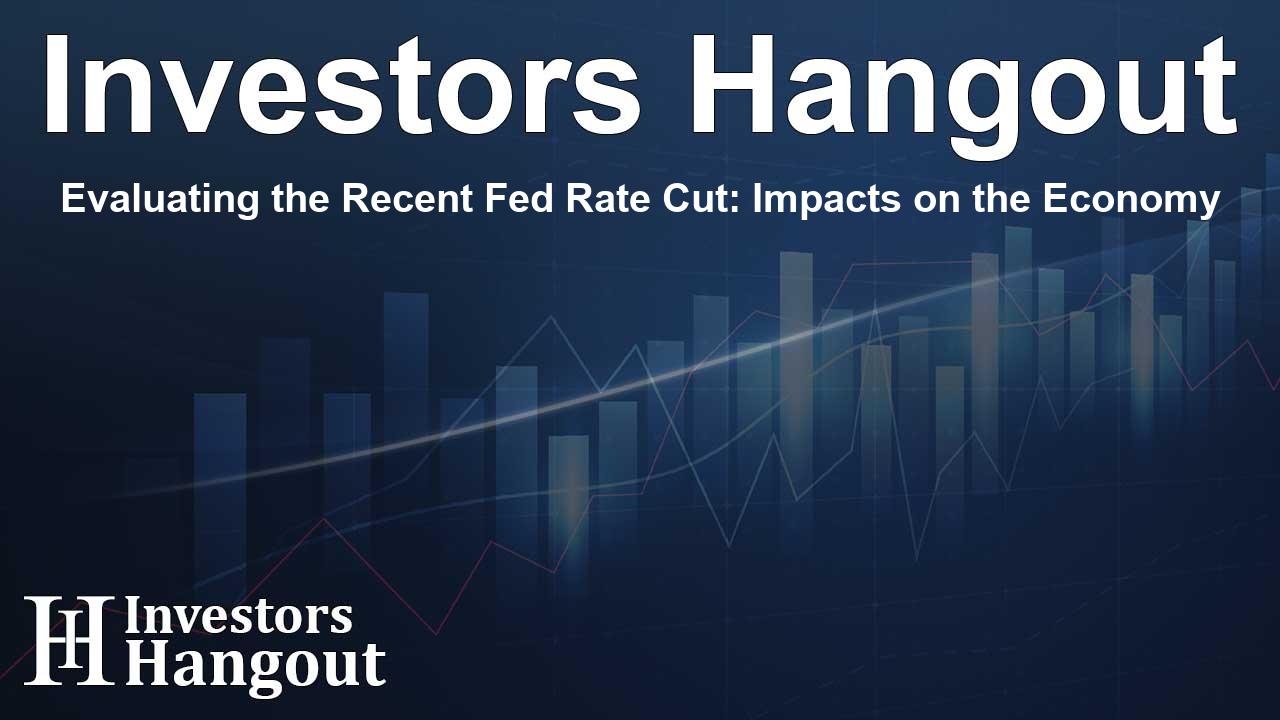Evaluating the Recent Fed Rate Cut: Impacts on the Economy

Understanding the Recent Fed Rate Cut
The Federal Reserve made headlines recently when it decided to lower the federal funds rate (FFR) by an unexpected 50 basis points. This move has already triggered notable reactions across the economy, including a drop in jobless claims and a rise in business sentiment. Interestingly, while the economy seems to react positively to this stimulus, the question arises: Did the economy truly need such a significant intervention at this time?
The Effect on Jobless Claims
One immediate outcome of the Fed's decision was a reduction in jobless claims. Just as analysts had anticipated during the summer months, the number of weekly unemployment claims fell by 11,000, resulting in a total of 219,000 claims. This figure marks the lowest level of claims recorded since May, indicating a healthier labor market. Continuing claims also showed a significant decline, dropping by 21,000 to 1.829 million. This points toward a notable decrease in the number of Americans receiving unemployment benefits, reflecting improvements in the job market.
Business Surveys Reflecting Optimism
September bore witness to a striking recovery in business confidence, evidenced by the positive movement in the Philly Fed's Manufacturing Purchasing Managers Index (M-PMI). After experiencing fluctuations earlier in the year, the index has now climbed back into positive territory. With the New York Fed's M-PMI also reporting increased activity, the overall outlook for the manufacturing sector appears promising. This uptick suggests that the recent rate cut may bolster an already recovering goods-producing sector, ultimately contributing to economic growth.
Analyzing Composite Economic Indicators
Further supporting this optimistic economic environment, the Conference Board Coincident Economic Index (CEI) reported a monthly increase of 0.3% in August, thus reaching a new record high. The components of the CEI—ranging from payroll employment to industrial production—all demonstrated improvements, signaling recovery after previous setbacks. Notably, the CEI maintains a strong correlation with forward earnings of the S&P 500, which also reached record levels, indicating a positive sentiment among investors.
Movement in Bond Yields
In tandem with these developments, the 10-year Treasury yield has seen an uptick of 13 basis points, now standing at 3.75%. This increase suggests that the bond market exhibits less certainty about a future decline in inflation, particularly post-rate cut. As nominal Treasury yields climb higher in comparison to TIPS yields, it conveys a shifting sentiment among bond investors, necessitating close monitoring of future Fed actions.
The Curved Landscape of Treasury Yield
The spread between the 10-year and 2-year Treasury yields has also steepened, a signal which often indicates market views on economic strength. Currently, this spread has moved into positive territory, reaching 0.13 percentage points. This reinforces the notion that market participants are skeptical about the need for the Fed's recent aggressive adjustments.
Stock Market Surge and Future Implications
On a positive note, the stock market responded enthusiastically to the Fed’s decisions. US stocks soared, particularly the tech-heavy Nasdaq index, showcasing robust performance. However, while larger tech stocks thrived, smaller companies represented by the Russell 2000 index lagged behind. This reflects the broader expectation that the Fed may not undertake as many rate cuts as some investors have predicted, especially in light of resilient economic data. Should the Fed continue to signal less aggressive rate cuts, it may manage to maintain balanced conditions in both the stock market and the broader economy.
Frequently Asked Questions
What triggered the Fed's decision to cut rates?
The Fed's decision stemmed from a combination of factors, including declining jobless claims and positive business surveys that indicated a need for continued economic support.
How have jobless claims reacted post-rate cut?
Following the rate cut, jobless claims dropped significantly, reflecting a healthier job market, with weekly claims falling to their lowest level since May.
What does the Conference Board Coincident Economic Index indicate?
The Conference Board Coincident Economic Index showed a monthly increase, suggesting that various economic indicators are improving, contributing to a stable economic environment.
What can we infer from rising Treasury yields?
Increased Treasury yields generally indicate that investors are becoming less certain about future inflation declines, impacting bond market dynamics.
How did the stock market respond to the rate cut?
The stock market reacted positively, with significant gains in major indices like the Nasdaq, showing investor confidence in continued economic recovery.
About The Author
Contact Owen Jenkins privately here. Or send an email with ATTN: Owen Jenkins as the subject to contact@investorshangout.com.
About Investors Hangout
Investors Hangout is a leading online stock forum for financial discussion and learning, offering a wide range of free tools and resources. It draws in traders of all levels, who exchange market knowledge, investigate trading tactics, and keep an eye on industry developments in real time. Featuring financial articles, stock message boards, quotes, charts, company profiles, and live news updates. Through cooperative learning and a wealth of informational resources, it helps users from novices creating their first portfolios to experts honing their techniques. Join Investors Hangout today: https://investorshangout.com/
The content of this article is based on factual, publicly available information and does not represent legal, financial, or investment advice. Investors Hangout does not offer financial advice, and the author is not a licensed financial advisor. Consult a qualified advisor before making any financial or investment decisions based on this article. This article should not be considered advice to purchase, sell, or hold any securities or other investments. If any of the material provided here is inaccurate, please contact us for corrections.
